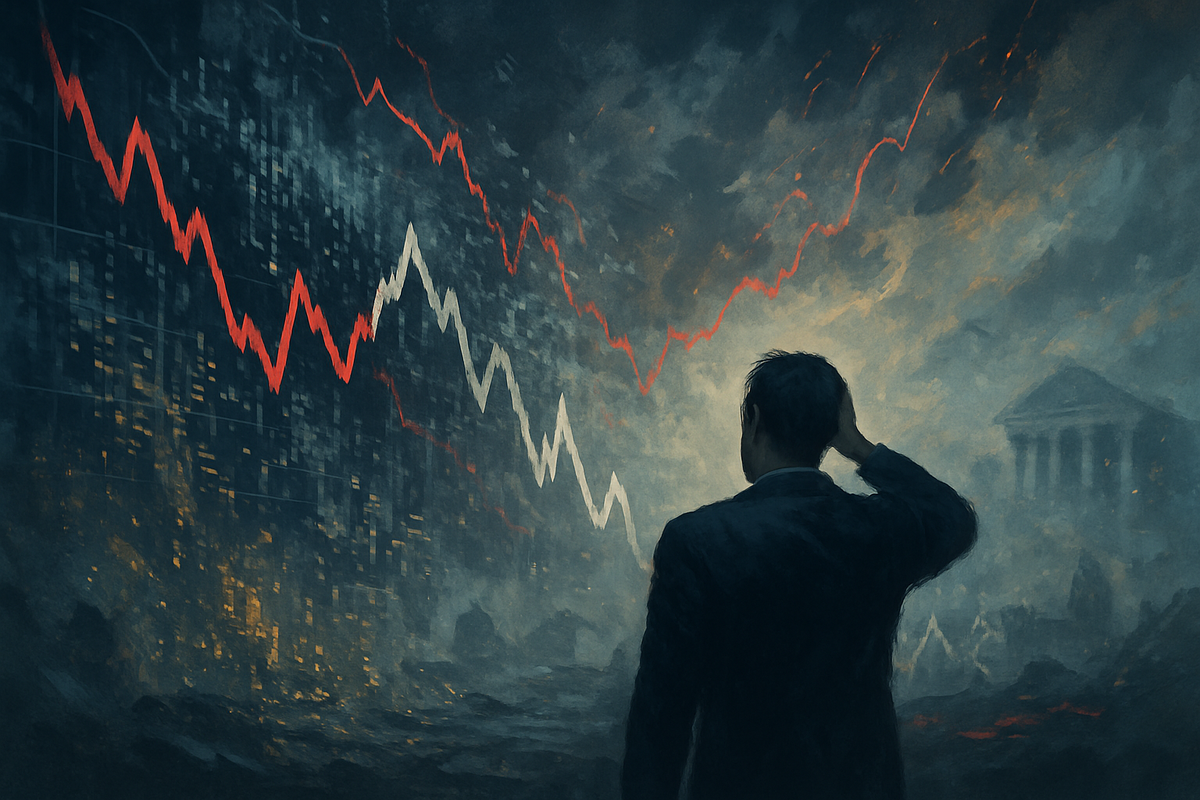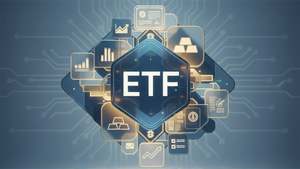
As of October 17, 2025, the global stock market finds itself in a precarious state, characterized by a palpable sense of uncertainty and heightened volatility. This turbulent environment is leading investors to navigate a landscape where rapid shifts in sentiment are the norm, prompting a noticeable gravitation towards traditional safe-haven assets amidst a subdued global economic outlook. The immediate implications of this market unease are a pervasive risk aversion, causing significant capital rotations and a re-evaluation of growth prospects across various sectors.
This period of market agitation reflects a complex interplay of geopolitical tensions, evolving monetary policy expectations, and specific sectoral anxieties. The prevailing sentiment suggests that while some temporary factors may have offered fleeting support earlier in the year, their fading influence is now exposing underlying vulnerabilities, setting the stage for potentially significant shifts in market dynamics as the year progresses.
Detailed Coverage: A Market on Edge
The current market turbulence is underscored by several key indicators and events. The CBOE Volatility Index (VIX), often dubbed the "fear index," has recently surged to five-month highs, signaling a significant increase in investor anxiety, though it remains below the peak levels observed in April. This heightened tension is occurring against a backdrop of modest global growth projections, with the International Monetary Fund (IMF) revising global GDP growth to 3.2% for 2025, a slight uptick from April but still indicative of a downward trend compared to pre-policy-shift forecasts. Advanced economies are anticipated to grow around 1.5%, while emerging markets and developing economies are projected just above 4%.
October 17, 2025, witnessed sharp falls across global stock markets, particularly after two US regional banks disclosed substantial exposure to bad loans and alleged fraud. This news sent shockwaves through European and Asian markets, with the FTSE 100 falling 1.5%, Germany's Dax down 2%, and Hong Kong's Hang Seng slumping 2.5%. Australia's ASX 200 Index also retreated 0.8% due to political uncertainty surrounding a scheduled meeting between Prime Minister Anthony Albanese and US President Donald Trump. While US markets showed some stabilization after an anxious Thursday, with regional bank stocks recovering some losses, the underlying fragility remains. In response to this widespread uncertainty, investors have flocked to safe-haven assets, with gold prices surging to a new record of $4,378 per ounce, marking its largest weekly gain since the 2008 financial crisis.
Companies Navigating the Storm: Winners and Losers
In this volatile market, certain sectors and companies are poised to either benefit or suffer. The flight to safety has been a boon for gold mining companies, which have seen their stock values appreciate significantly in tandem with the rising price of gold. These companies, often viewed as defensive plays during economic uncertainty, are likely to continue attracting investor interest as long as market fears persist.
Conversely, several sectors are facing considerable headwinds. Technology stocks (NASDAQ: NASDAQ), particularly those with elevated valuations tied to the AI boom, are under scrutiny due to concerns about a potential "AI bubble." Should this bubble deflate, companies heavily invested in or valued by AI speculation could experience sharp corrections. The energy sector has also seen sharp declines, dropping 2.8% recently, reflecting broader economic growth concerns that could impact demand. Perhaps most critically, the banking sector, especially US regional banks, is facing intense pressure. Disclosures of exposure to substantial bad loans and alleged fraud have rattled confidence, with warnings from figures like JPMorgan (NYSE: JPM) CEO Jamie Dimon about a potential "infestation" of bad loans, suggesting a wider credit stress within the lending network. This could lead to stricter lending standards, reduced profitability, and potential insolvencies for vulnerable institutions.
Wider Significance: Ripple Effects and Historical Echoes
The current market turbulence is not an isolated phenomenon but rather a reflection of several interconnected global trends. The renewed escalation of US-China trade tensions, with threats of "massive" tariffs, continues to be a significant source of uncertainty, impacting supply chains and corporate earnings globally. This trade friction, while occasionally tempered by deals, maintains a volatile environment that discourages long-term investment in certain sectors. The discussion around a potential "AI bubble" echoes historical precedents like the dot-com bubble of the late 1990s, where speculative fervor led to inflated valuations followed by significant market corrections. The increasing reliance of equity indexes on a small number of tech giants makes the market particularly vulnerable to a sudden unwind of this perceived bubble.
Furthermore, elevated inflation and the uncertain trajectory of interest rates remain critical factors. While global inflation is projected to decline, variations persist, with the US still above target and the UK's core inflation closer to 4%. The Federal Reserve's stance on interest rates and the prospect of further cuts by central banks are closely watched, with any unexpected moves potentially triggering further volatility. High levels of government debt in major economies like the US, France, UK, and Japan also pose a concern for public debt sustainability and fiscal vulnerabilities. Finally, policy uncertainty, exemplified by a partial US government shutdown delaying IPO approvals and economic data releases, combined with geopolitical risks, creates a challenging landscape where prolonged uncertainty and protectionism could stifle growth.
What Comes Next: Scenarios and Strategic Shifts
Looking ahead, the stock market's path is fraught with both challenges and potential opportunities. In the short term, continued volatility is likely as investors grapple with ongoing trade negotiations, central bank rhetoric on interest rates, and the unfolding situation with regional banks. A resolution, or at least a de-escalation, of US-China trade tensions could provide a much-needed boost to market sentiment, but sustained uncertainty will likely keep markets on edge. Companies will need to consider strategic pivots, such as diversifying supply chains away from heavily tariffed regions or focusing on domestic market resilience.
Long-term possibilities include a potential re-rating of the AI sector if valuations are indeed stretched, leading to a more sustainable, albeit potentially lower, growth trajectory for many tech companies. Conversely, if AI innovation continues to drive tangible economic benefits, the sector could consolidate its gains. Investors should prepare for a period where fundamental analysis and strong balance sheets become even more critical than speculative growth. Market opportunities may emerge in defensive sectors, value stocks, and companies with robust cash flows and low debt. The primary challenge will be navigating a landscape where economic data, geopolitical developments, and corporate earnings will be scrutinized for any signs of stability or further deterioration. Potential scenarios range from a gradual recovery as uncertainties resolve to a more protracted period of sideways trading or even further corrections if negative catalysts intensify.
Comprehensive Wrap-up: Navigating the New Normal
The current market environment is a vivid reminder of the interconnectedness of global finance, geopolitics, and economic fundamentals. Key takeaways include the increasing importance of safe-haven assets like gold, the vulnerability of highly valued growth sectors, and the lingering threat of credit stress within the financial system. The market moving forward will likely be characterized by continued caution and a heightened focus on risk management. Investors should anticipate a period where agility and diversification are paramount.
The significance of this period extends beyond immediate price movements; it represents a recalibration of market expectations in the face of persistent uncertainty. The lasting impact could be a more discerning investment landscape, where companies with genuine innovation and resilient business models are favored over speculative ventures. What investors should watch for in the coming months are developments in US-China trade relations, the Federal Reserve's interest rate decisions, further disclosures from the banking sector, and any signs of a slowdown or acceleration in global economic growth. Staying informed and maintaining a long-term perspective will be crucial for navigating this topsy-turvy stock market.
This content is intended for informational purposes only and is not financial advice






